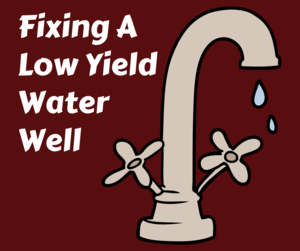CALL TODAY 1-800-441-6281
CALL TODAY 1-800-441-6281

Get The Facts on Well Water Treatment and Water Filtration Systems
- Tags:
- water contamination
When the water flows from the faucet, we assume it is safe to drink. Throughout much of New England that is the case, however, there are problems that can arise in any home. Did you know blue-green staining in your tub or sink indicates corrosive water that will eventually damage you pipes. Or that one in five wells in New Hampshire have at least a small amount of arsenic?
Here are some examples of the signs that indicate you could have a water quality problem.
* Blue/Green staining on household fixtures
* Brown/Black staining on household fixtures
* Orange/brown staining laundry and on outside fixtures
* Sediment build-up in faucets, shower heads and washing machines
* Rotten-egg smell from one or more locations in the home
* Calcium build up or a white powdery material on faucets and fixtures
If you think you have a water quality problem, don’t worry. The most common problems are easy to fix by installing the right water treatment system.
Kinds of water treatment systems
There are two kinds of water filtration devices: point-of-entry and point-of use.
Point-of-entry filters are installed where the water comes into the home and treats the water used throughout the home. Point-of-use filters are installed where the water comes from the faucet and are usually for filtering water for consumption.
When deciding on what kind of system to use, consider whether you want to merely to improve the drinking water or to improve the entire home’s water system. While drinking water is arguably the most important use of water coming into the home, it accounts for about 1 percent of the average homeowner’s water usage.
KINDS OF POINT-OF-USE FILTERS
An inline filter is installed under a sink and filters the water through a cartridge packed with a filtration medium or filtering membrane. These systems often include a separate faucet for dispensing water.
Reverse osmosis filters remove materials by forcing the water under high pressure through a membrane. The removed materials are then flushed out in a waste water stream.
KINDS OF POINT-OF-ENTRY FILTERS
Inline filtration systems can also be used at the point of entry to remove iron, reduce chlorine and to adjust the pH level. The most common system is a water softener, which removes calcium and other minerals.
Water softeners work by using a chemical process called ion exchange. Water flows into the home and the water softener, flushing over small plastic beads, also known as resin. These beads carry a negative charge, which attract the positively charged minerals, like calcium and magnesium, as the water passes through the tank. The minerals are replaced with sodium that comes from a salty brine solution stored in the water softener. Once the resin is saturated, the water softener flushes and recharges the resin.
How to choose the system right for a home
Once the water quality problem has been identified, the next step is selecting the right system. It is important the manufacturer have a record of good quality and service, since this will be a long-term purchase you do not want to make again soon.
Companies like Culligan and Kinetico are generally considered high-quality systems, but all future service on the system must be done by technicians employed by those companies. Skillings & Sons typically recommends purchasing a non-proprietary water filter or softener, such as one made byWater Right. This Wisconsin-based company makes their equipment and parts in the United States and has earned a reputation for innovation. One such innovation is their Sanitizer Series, which instead of plastic resin to filter water, uses a crystalline media that is impervious to chlorine, backwashes in less time and at greater flow rates.
When purchasing and installing a water treatment system, choosing the right technician will ensure the system lasts for years and does not interfere with other elements of your home water system. Contact the water well professionals for advice on which water treatment is right for your home.

